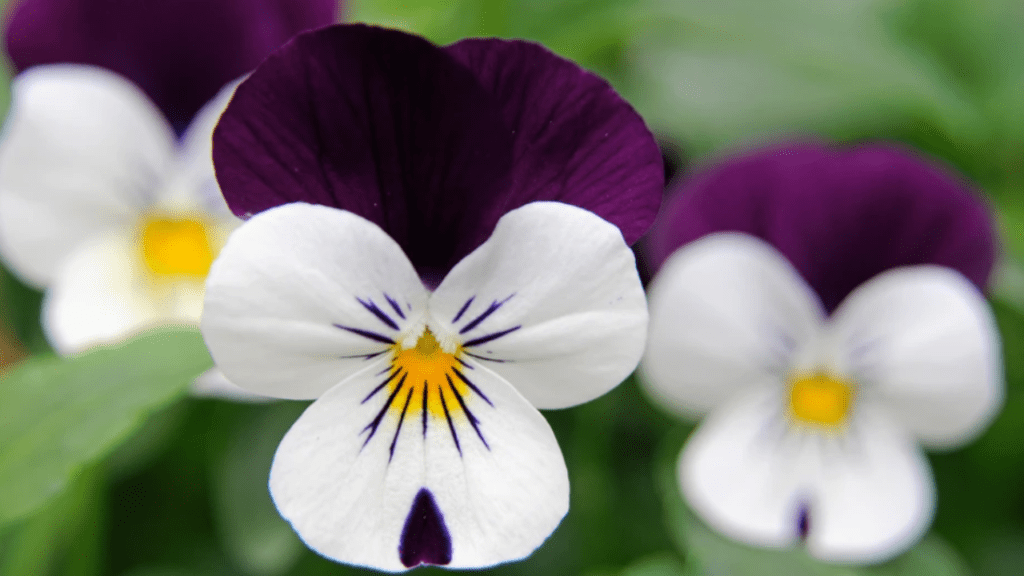
How to Grow and Care for Viola Plant: A Gardener’s Guide
Gardening enthusiasts, listen up! If you want to add a touch of beauty and elegance to your garden, then the Viola plant is the perfect choice for you. In this comprehensive guide, we will provide you with all the necessary tips and advice on how to grow and care for this versatile plant. Whether you’re a novice or a seasoned gardener, this guide will equip you with the knowledge and skills needed to cultivate a thriving Viola plant. So, grab your gardening tools and let’s get started on creating a stunning and vibrant garden with the Viola plant!
Table of Contents
ToggleOverview of the Viola Plant
The Viola plant, also known as the pansy, is a beautiful and versatile plant that is perfect for adding color and charm to any garden. This hardy plant comes in a variety of colors and can thrive in both sunny and shady areas, making it a great choice for any garden. With its delicate flowers and compact size, the Viola plant is a wonderful addition to flower beds, borders, and containers. It is also a favorite among pollinators, attracting butterflies and bees to your garden. With proper care and attention, the Viola plant can bloom from early spring all the way through to fall, providing a constant burst of color and beauty. Whether you’re a beginner or an experienced gardener, the Viola plant is an excellent choice for adding a pop of color and elegance to your outdoor space. With the right care and maintenance, you can enjoy the beauty of the Viola plant for years to come. So, why wait? Start growing and caring for your Viola plant today and watch as your garden comes to life with vibrant and beautiful flowers.
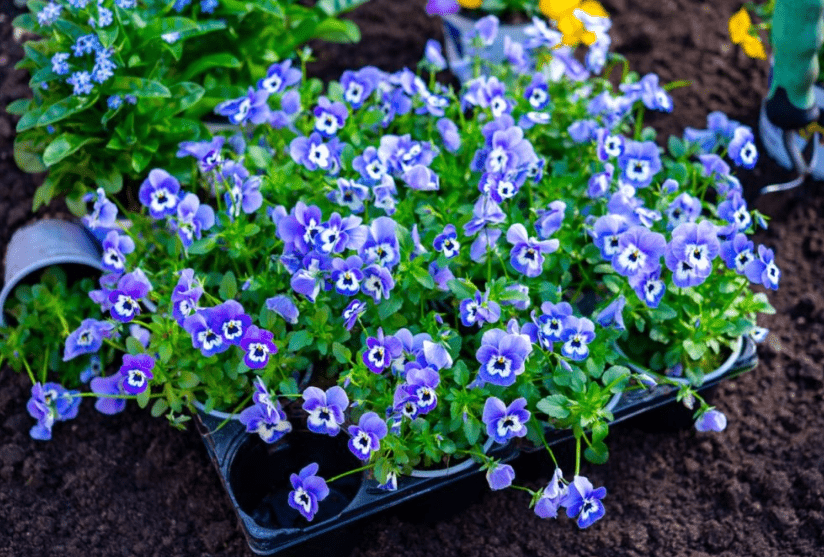
Popular Species and Varieties of Viola
Highlight common species like Viola tricolor (wild pansy) and Viola odorata (sweet violet).
The Viola plant is a stunning addition to any garden or outdoor space. Its delicate flowers and compact size make it a popular choice for flower beds, borders, and containers. Not only is the Viola plant visually appealing, but it also attracts important pollinators such as butterflies and bees, making it an essential addition to any garden ecosystem. With the right care and attention, the Viola plant can bloom from early spring all the way through to fall, providing a constant burst of color and beauty to your outdoor space.
Whether you’re a beginner or an experienced gardener, the Viola plant is an excellent choice for adding a pop of color and elegance to your garden. With proper care and maintenance, you can enjoy the beauty of the Viola plant for years to come. Common species such as Viola tricolor (wild pansy) and Viola odorata (sweet violet) are particularly popular choices and can easily thrive in a variety of garden settings.
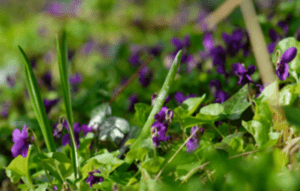
So why wait? Start growing and caring for your Viola plant today and watch as your garden comes to life with vibrant and beautiful flowers. Embrace the beauty and elegance of the Viola plant and add a touch of natural charm to your outdoor space.
How to Grow Viola Plant
Ideal growing conditions: light, soil, and temperature requirements.
The Viola plant is a wonderful addition to any garden, and with the right growing conditions, it can thrive and bring beauty to your outdoor space. These plants require plenty of sunlight, so be sure to plant them in an area that receives full or partial sunlight throughout the day. They also prefer well-drained soil, so make sure to plant them in soil that is rich and fertile. As for temperature requirements, Viola plants prefer cooler temperatures, making them an ideal choice for spring and fall gardens. With the right care and attention to these growing conditions, your Viola plant will flourish and provide you with a constant burst of color and beauty in your garden. Don’t miss out on the opportunity to add this elegant and vibrant plant to your outdoor space. Get started on growing and caring for your Viola plant today and enjoy the beauty it brings to your garden for years to come.
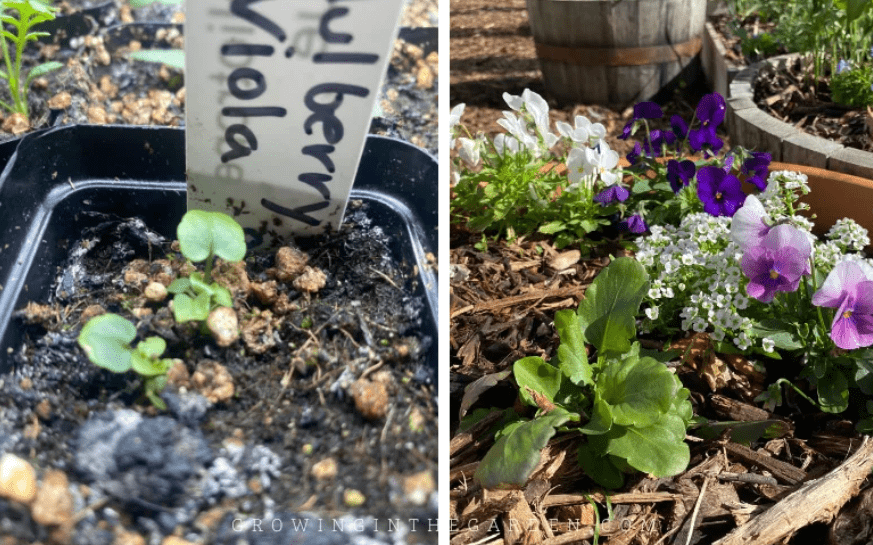
Best practices for planting in garden beds and containers.
When it comes to planting in garden beds and containers, there are a few best practices to keep in mind. First, make sure to choose the right location for your plants. Consider the amount of sunlight, soil drainage, and temperature requirements for each plant. This will ensure that your plants have the best chance of thriving in their environment. Secondly, prepare the soil properly by adding compost or fertilizer to provide essential nutrients for your plants. It’s also important to water your plants regularly and ensure that they are well-hydrated. Additionally, be mindful of the spacing between plants to allow for proper growth and airflow. Lastly, don’t forget to regularly monitor your plants for any signs of pests or diseases and take action to address any issues that may arise. By following these best practices, you can create a thriving and beautiful garden that will bring joy and beauty to your outdoor space.
Watering and fertilization needs for healthy growth.
Watering and fertilization are essential factors for the healthy growth of plants. It’s crucial to consider the individual needs of each plant, such as the amount of sunlight, soil drainage, and temperature requirements. By understanding these needs, you can provide the best environment for your plants to thrive. Additionally, preparing the soil with the right amount of compost or fertilizer will ensure that your plants have access to the essential nutrients they need. Proper watering is also crucial for healthy plant growth. Ensure that your plants are well-hydrated and adjust your watering schedule based on the specific needs of each plant. Adequate spacing between plants is important to allow for proper growth and airflow. This will help prevent overcrowding and disease. Lastly, it’s important to regularly monitor your plants for any signs of pests or diseases. If any issues arise, take immediate action to address them and prevent further damage to your plants. By taking these steps, you can create a lush and vibrant garden that will bring beauty and joy to your outdoor space.
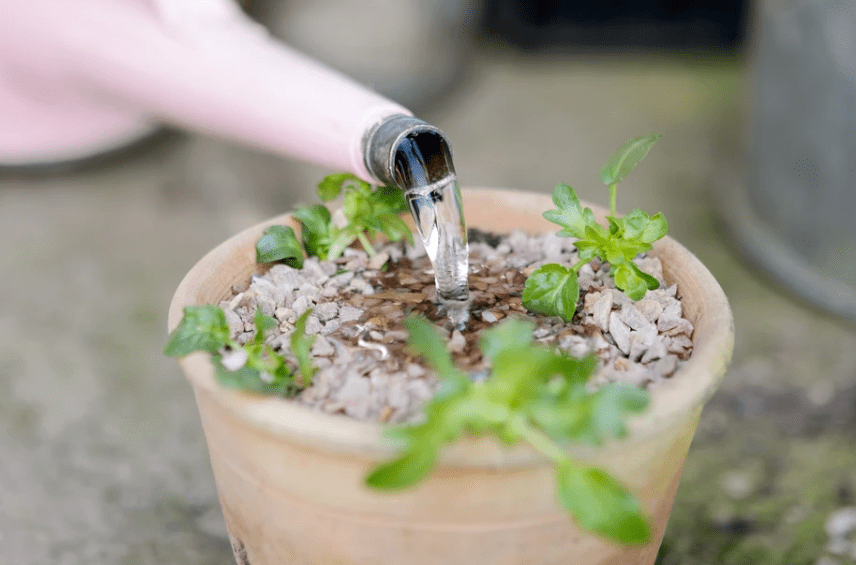
Seasonal Care for Viola Plant
Care instructions for different seasons: spring, summer, fall, and winter.
As the seasons change, it’s important to adjust your plant care routine to ensure the health and vitality of your garden. In the spring, focus on planting and fertilizing your plants to encourage strong growth. As the weather warms up in the summer, make sure to water your plants regularly and protect them from the heat. In the fall, it’s time to prepare your garden for the colder months by pruning and cleaning up any debris. And in the winter, be sure to protect your plants from frost and cold temperatures by covering them or bringing them indoors. By following these care instructions for each season, you can ensure that your garden remains healthy and beautiful year-round.
How to prepare Viola plants for winter and encourage reblooming in spring.
As the seasons change, it’s important to adjust your plant care routine to ensure the health and vitality of your Viola plants. In the spring, focus on planting and fertilizing your plants to encourage strong growth. Make sure to water them regularly to keep the soil moist and provide them with plenty of sunlight. In the summer, continue to water your plants regularly and protect them from the heat by providing some shade during the hottest part of the day. Deadhead any spent flowers to encourage new blooms and continue to fertilize as needed.
As fall approaches, it’s time to prepare your Viola plants for the colder months. Prune back any dead or overgrown growth and clean up any debris from around the plants. This will help prevent disease and pests from overwintering in your garden. As winter sets in, be sure to protect your plants from frost and cold temperatures. Consider covering them with a light layer of mulch or bringing them indoors to a cool, but not freezing, location.
By following these care instructions for each season, you can ensure that your Viola plants remain healthy and vibrant. With proper care and attention, you can encourage reblooming in the spring and enjoy the beauty of your Viola plants year after year. Don’t neglect your garden during the winter months, as proper preparation and care will ensure a stunning display of flowers in the spring.
Tips for deadheading and pruning to prolong flowering.
Deadheading and pruning are important tasks to prolong the flowering life of your plants. When you deadhead, you are removing spent flowers to encourage new growth and more blooms. This will keep your plants looking fresh and vibrant. Pruning, on the other hand, involves cutting back overgrown or dead growth to promote healthy growth and shape the plant. By keeping up with these tasks, you can ensure your plants continue to bloom for an extended period of time.
In addition, it’s important to clean up any debris from around your plants to prevent disease and pests from overwintering. This will help keep your garden healthy and thriving. As winter approaches, it’s vital to protect your plants from frost and cold temperatures. Consider covering them with a light layer of mulch or bringing them indoors to a cool, but not freezing, location.
By following these care instructions for each season, you can ensure that your plants remain healthy and vibrant. With proper care and attention, you can encourage reblooming in the spring and enjoy the beauty of your plants year after year. Don’t neglect your garden during the winter months, as proper preparation and care will ensure a stunning display of flowers in the spring. Keep up with deadheading and pruning to prolong flowering and enjoy a beautiful garden all year round.
Propagating Viola Plant
Methods of propagation: seeds, cuttings, and division.
When it comes to keeping your garden healthy and thriving, understanding the methods of propagation is essential. Whether it’s through seeds, cuttings, or division, each method plays a crucial role in the growth and spread of your plants. By learning and utilizing these propagation techniques, you can ensure that your garden continues to flourish year after year.
As winter approaches, it’s important to take steps to protect your plants from frost and cold temperatures. Whether it’s covering them with a light layer of mulch or bringing them indoors to a cool, but not freezing, location, proper care during the winter months is essential. By following these care instructions for each season, you can encourage reblooming in the spring and enjoy the beauty of your plants year after year.
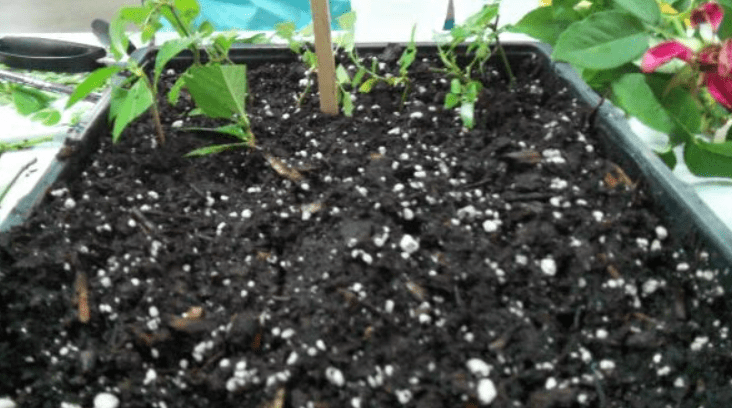
Don’t neglect your garden during the winter months, as proper preparation and care will ensure a stunning display of flowers in the spring. By keeping up with deadheading and pruning, you can prolong flowering and enjoy a beautiful garden all year round. With the right propagation methods and care, your garden will continue to thrive and bring joy to your home and community.
Step-by-step guide on growing Viola from seeds.
Violas are beautiful and delicate flowers that can add a pop of color to any garden. With the right knowledge and techniques, you can grow these stunning flowers from seeds and enjoy their beauty year after year. It’s important to start by preparing the soil and ensuring it is well-drained and fertile. Once you have the right soil, you can sow the seeds in a shallow tray or pot and cover them lightly with soil. Keep the soil moist and provide plenty of sunlight for the seeds to germinate. As the seedlings emerge, be sure to thin them out to ensure healthy growth. Transplant the seedlings into individual pots once they have developed a few sets of true leaves. Finally, as the plants grow, be sure to provide them with regular watering and fertilization to promote strong and healthy growth. By following these steps, you can enjoy a beautiful display of Violas in your garden and continue to propagate them for years to come. Don’t miss out on the opportunity to grow these stunning flowers from seeds and add a touch of elegance to your garden.
Common Pests and Diseases
Identify common pests and diseases that affect the Viola plant.
The Viola plant is a beautiful addition to any garden, but it is important to be aware of common pests and diseases that can affect its growth. Some common pests that can affect the Viola plant include aphids, snails, and slugs. These pests can cause damage to the leaves and flowers of the plant, so it is important to regularly inspect your Viola plants and take appropriate measures to control these pests.
In addition to pests, the Viola plant is also susceptible to diseases such as powdery mildew and botrytis. Powdery mildew appears as a white powdery substance on the leaves and stems of the plant, while botrytis causes gray mold to form on the flowers and leaves. To prevent these diseases, it is important to provide adequate air circulation and avoid overhead watering, as these conditions can promote the growth of these fungal diseases.
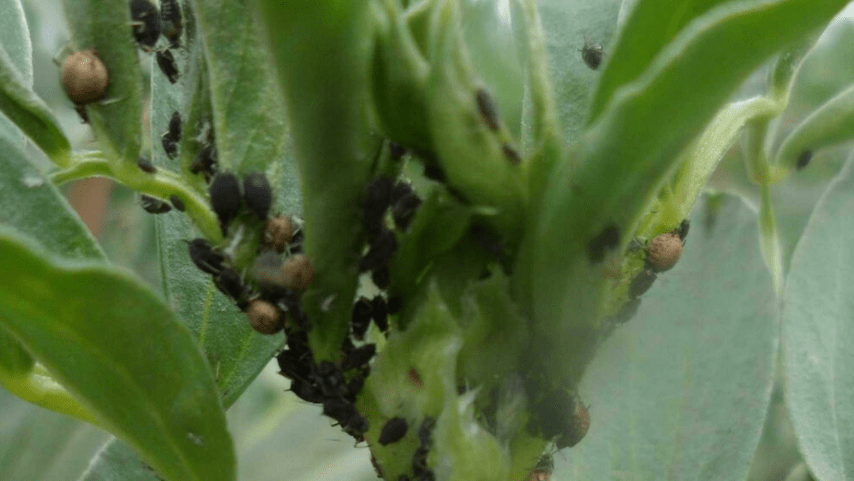
By being proactive in monitoring and controlling pests and diseases, you can ensure the health and vitality of your Viola plants. Regularly inspecting and maintaining your plants will help to prevent potential issues and keep your garden looking vibrant and beautiful. Don’t let pests and diseases discourage you from growing Violas – with proper care and attention, you can enjoy these stunning flowers in your garden for years to come.
Natural and chemical treatment options.
It is crucial to address the issue of pests and diseases in your Viola plants. These pests can cause significant damage to the leaves and flowers, affecting the overall health of your plant. Regular inspection and proactive measures are necessary to control these pests and keep your Viola plants thriving. In addition to pests, diseases such as powdery mildew and botrytis can also pose a threat to your plants. It is important to provide proper air circulation and avoid overhead watering to prevent the growth of these fungal diseases. By taking proactive steps to monitor and control pests and diseases, you can ensure the health and vitality of your Viola plants. Don’t let these issues discourage you from growing Violas – with the right care and attention, you can enjoy the beauty of these flowers in your garden for years to come. Consider both natural and chemical treatment options to address these concerns and keep your Viola plants healthy and vibrant. Your dedication and effort will pay off in the long run.
Uses of Viola Plant in Garden Design
How to incorporate Violas into different garden styles: cottage gardens, rock gardens, and borders.
Violas are versatile and beautiful plants that can be incorporated into a variety of garden styles. In a cottage garden, Violas can add a charming and whimsical touch with their delicate blossoms and vibrant colors. They can be planted in clusters or scattered throughout the garden to create a natural, wildflower look. In a rock garden, Violas can thrive in the well-drained soil and add a pop of color amongst the rocks and gravel. Their low-growing, compact nature makes them a perfect fit for this type of garden. In borders, Violas can be used as edging plants to define and highlight the edges of flower beds. Their colorful blooms can create a stunning border that adds visual interest and appeal to the overall garden design. No matter the style of your garden, Violas can be a beautiful and versatile addition that enhances the overall aesthetic. Don’t hesitate to incorporate these lovely plants into your garden design and enjoy the beauty they bring.
Combining Violas with other plants for stunning displays.
Violas are a versatile and beautiful addition to any garden, and they can be combined with other plants to create stunning displays. They can be planted in clusters or scattered throughout the garden to create a natural, wildflower look. In a rock garden, Violas can thrive in the well-drained soil and add a pop of color amongst the rocks and gravel. Their low-growing, compact nature makes them a perfect fit for this type of garden. In borders, Violas can be used as edging plants to define and highlight the edges of flower beds. Their colorful blooms can create a stunning border that adds visual interest and appeal to the overall garden design. No matter the style of your garden, Violas can be a beautiful and versatile addition that enhances the overall aesthetic. Don’t hesitate to incorporate these lovely plants into your garden design and enjoy the beauty they bring. With the right combination of plants, you can create a truly stunning display that will be the envy of all your neighbors.
Benefits of Growing Viola Plant
There are so many benefits to growing Viola plants in your garden. Not only are they incredibly beautiful with a wide variety of colors and patterns, but they also have practical benefits as well. Violas are great for rock gardens as they thrive in well-drained soil and add a pop of color amongst the rocks and gravel. Their low-growing, compact nature makes them a perfect fit for this type of garden. In addition, Violas can be used in borders as edging plants to define and highlight the edges of flower beds, creating a stunning border that adds visual interest and appeal to the overall garden design. No matter the style of your garden, Violas can be a beautiful and versatile addition that enhances the overall aesthetic. So don’t hesitate to incorporate these lovely plants into your garden design and enjoy the beauty they bring. With the right combination of plants, you can create a truly stunning display that will be the envy of all your neighbors. So go ahead and plant some Violas in your garden today and enjoy all the benefits they have to offer!
In conclusion, growing and caring for the Viola plant is a rewarding and enjoyable experience for any gardener. By following the tips and advice provided in this guide, you can ensure that your Viola plants thrive and flourish in your garden. From proper watering and sunlight to soil maintenance and pest control, this guide covers everything you need to know to successfully care for your Viola plants. So, if you’re looking to add a touch of beauty and elegance to your garden, be sure to follow this comprehensive guide and watch your Viola plants bloom and thrive. Happy gardening!
Frequently asked questions And Answer
The best soil for growing viola plants is well-draining, rich, and slightly acidic soil. Make sure to add organic matter to the soil to improve its quality.
Viola plants prefer consistently moist soil, so make sure to water them regularly, especially during dry periods. However, be careful not to overwater them, as this can lead to root rot.
Viola plants thrive in partial shade to full sun, so make sure to place them in a location where they can get at least 4-6 hours of sunlight per day.
To encourage blooming, deadhead the spent flowers regularly and fertilize the plants with a balanced fertilizer every 4-6 weeks during the growing season.
Viola plants are relatively resilient, but they can be susceptible to aphids, slugs, and snails. Keep an eye out for these pests and take appropriate measures to control them.
Yes, viola plants can be grown in containers, as long as the containers have good drainage and are filled with high-quality potting mix.
Viola plants can be easily propagated by seeds, division, or cuttings. Choose the method that works best for you and enjoy multiplying your beautiful viola plants.
In colder climates, provide a layer of mulch around the plants to protect their roots from freezing temperatures. If you’re growing them in containers, consider bringing them indoors during the winter months.
